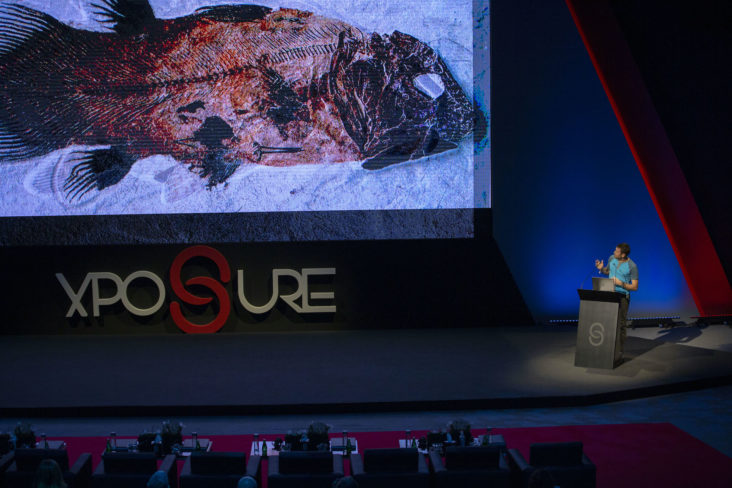Ballesta, Garriock Showcase Deep Sea Marvels To Spark Hope And Mystique At “Xposure 2022”

“The more you explore, the more derisory your knowledge seems. The more you know, the more you don’t know,” said French naturalist photographer, Laurent Ballesta, during his presentation on Mediterranean Planet and the Gombessa Expeditionsat the debut edition of the Conservation Summit at Xposure International Photography Festival on Thursday.
Taking the audience on a spectacular journey under sea and narrating his experiences of a 28-day-long expedition deep inthe Mediterranean, Ballesta remarked:“There, in the twilight of the still untouched depths, we found dazzling life forms.”
“Did we push our limits? We, in fact, discovered our limits,” he went on, as he brought to life some of the stunning discoveries made in geographically diverse locations – in Antarctica, in the Mediterranean Sea.
“For every voyage, we had a vehicle. For the stars, we take a spacecraft but to the abyss, we had a ‘bathyal station’ because great depths are like distant planets of a neighbouring galaxy,” he said, speaking of his unique underwater workstation. “The distances may seem small but once you get there, it is like stepping into a parallel universe.”
“There is nothing more exciting than these mysteries deep under the sea,” said Ballesta, as he recounted his experiences of capturing the annual spawning event of groupers in Fakarava, French Polynesia; of seeing hungry sharks feeding on prey; and the thrill of witnessing Gombessa, a legendary bottom-dwelling sea creature once thought to have become extinct 70 million years ago!
“The mammoth became extinct only 4,000 years ago – we are talking 70 million years here!” he exclaimed while sharing photos of the creature, first discovered in 1938. “It is undoubtedly one of the most important zoological discoveries of the 20th century.”
Broadening the focus of conservation photography
In The Conservation Lens, Canadian filmmaker Jeffrey Garriock spoke of how tourism, contrary to popular belief, was not the enemy of conservation but, in fact, the bridge. Sharing excerpts of his works that took him to Mozambique’s Guinjata Bay and Galapagos Islands in the Pacific Ocean to Antarctica, he highlighted little known aspects of those who help preserve and protect marine life across the world.
Garriock shared details of real-life heroes like Pascal, a local fisherman who helped build a primary school in Mozambique to involve local children in marine conservation and Jonathan Green, the founder-director of the Galapagos Whale Shark Project.
Summing up his presentation with a message of hope, Garriocksaid: “We need to understand the importance of hope. We are losing species and habitats, but we must not lose hope. Hope lets us imagine a better future.”



